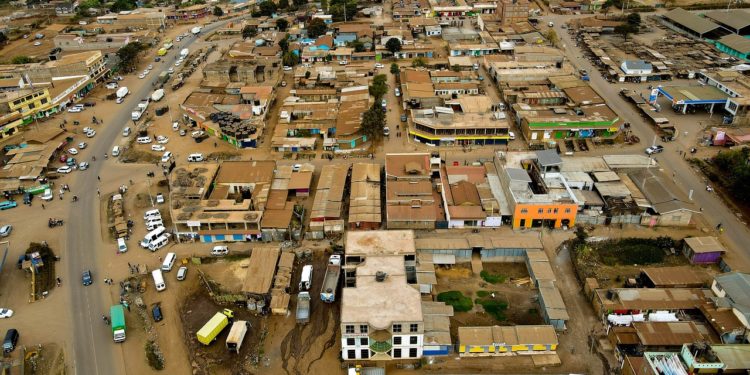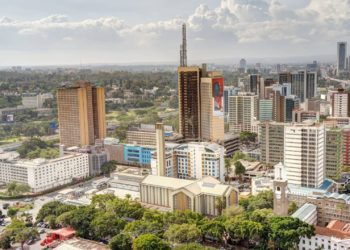Kenya’s poverty crisis is intensifying, with female-headed households, youth, and rural residents facing the heaviest burden. According to the Kenya Poverty Report 2022, released by the Kenya National Bureau of Statistics (KNBS), the poverty headcount rate has risen to 39.8% nationally, meaning that over 20 million Kenyans are struggling to meet basic needs. Food poverty, a condition affecting those unable to afford basic food items, impacts 31.7% of the population, translating to more than 16 million people across the country.
The report reveals that female-headed households have slightly higher poverty rates than their male-headed counterparts, with 35.3% of female-led homes falling below the poverty line compared to 32.6% of male-led households. Households with children experience an even more significant hardship, especially in rural areas where poverty rates are highest. “Female-headed households are facing unique challenges, with many of them unable to afford essential needs, particularly those in rural areas,” noted Macdonald Obudho, Director General of KNBS.
Sharp Regional Divides
Regional differences in poverty levels are striking. While Nairobi has the lowest overall poverty rate at 16.5%, arid and semi-arid counties such as Turkana, Mandera, and Samburu continue to see staggering poverty levels. In Turkana County, the overall poverty rate has soared to 82.7%, while Mandera and Samburu have poverty rates of 72.9% and 71.9%, respectively. These counties are marked by a lack of economic opportunities and extreme climate conditions, which exacerbate the difficulties in securing a stable food supply.
For many in the most impoverished areas, food insecurity is a stark reality. According to the report, Turkana has the highest food poverty rate, affecting 64.3% of residents. Nairobi, meanwhile, has one of the lowest food poverty rates at 15.8%, along with Kiambu (18.3%) and Nyeri (18.2%). These numbers highlight the concentration of poverty in Kenya’s arid regions, where government and humanitarian agencies continue to focus much of their efforts.
Youth and Elderly Hit Hard
The report also sheds light on the plight of Kenya’s youth, with an estimated four out of ten young people aged 15-24 facing food poverty. This age group, which represents a substantial part of Kenya’s workforce, finds itself disproportionately affected. This demographic is further challenged by unemployment and limited access to economic opportunities, especially in rural areas where food poverty for young people is recorded at 41%, compared to 37% in urban settings.
The elderly are similarly impacted by food poverty, with 31% of adults aged 70 and older unable to afford basic food necessities. For those in urban areas, food poverty among the elderly reaches 39%, reflecting the rising cost of living in cities and the financial strains on Kenya’s social support systems.
Escalating Cost of Living
Beyond the challenges specific to demographics, the report illustrates the rising cost of living in Kenya, where the average monthly expenditure on food and non-food essentials per adult equivalent rose to KSh 8,030 in 2022, up from KSh 7,393 the previous year. Food expenditures alone accounted for 59.1% of total household spending, with rural areas spending an even larger share on food compared to urban households.
Nationally, the poorest 20% of households accounted for just 8.5% of the total consumption expenditure in rural areas, underscoring the income disparities that continue to grow as inflation accelerates. For the wealthiest quintile, consumption expenditure represented nearly half of all national spending. “The data shows the severe income disparities between the richest and poorest segments of society, with those at the bottom unable to keep up with rising prices for basic goods,” said Obudho.
Widening Income Inequality
The report uses the Gini index, a measure of income inequality, which indicates that inequality has remained significant despite minor fluctuations. In 2022, Kenya’s Gini index stood at 38.4%, down slightly from 38.9% in 2021, though still reflecting significant wealth disparities. High-income inequality was observed particularly in urban areas, where wealthier households account for a larger share of consumption.
Implications and Calls for Action
The Kenya Poverty Report’s findings come as the government ramps up its efforts to address the country’s poverty crisis. Initiatives under Kenya’s Vision 2030 and Sustainable Development Goals (SDGs) prioritize equitable economic growth, yet significant challenges remain, particularly in regions with persistent poverty.
Development organizations, including UNICEF and the World Bank, have collaborated with KNBS on the poverty report and continue to support efforts to alleviate poverty. Their initiatives aim to strengthen social protection measures, promote women’s economic empowerment, and provide targeted support to youth in rural areas.
For Kenya, reducing poverty remains a complex challenge involving economic policy, social programs, and targeted aid. According to the report, achieving a meaningful reduction in poverty levels will require multifaceted solutions aimed at reducing income disparities, increasing employment opportunities for youth, and expanding access to affordable food and essential services across the nation.


















